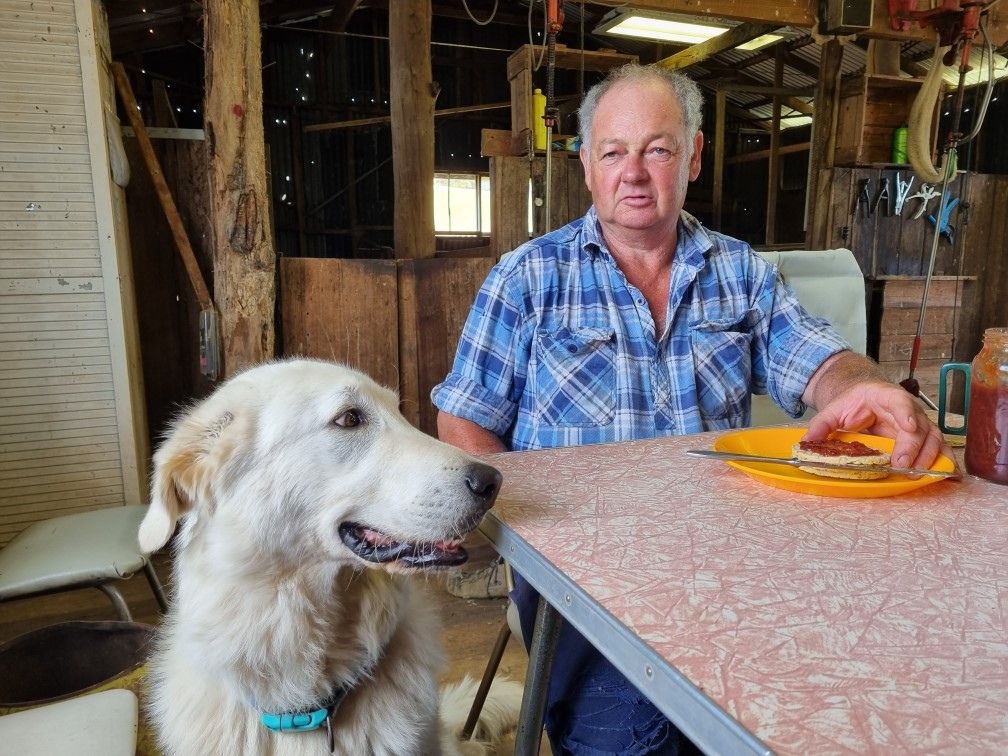Maremmas to protect stock from wild dog attack?
Kim Woods, National Wild Dog Action Plan Communications Coordinator
Victorian wool growers who have used livestock guardian dogs long-term, believe that they are not a panacea to controlling dingoes and wild dogs. According to growers, livestock guardian dogs require an investment in training, handling and care and must be protected by electric predator fencing. They should also be used in conjunction with a wild dog management program.
East Gippsland wool growers Philip and Patrizia Neven fight “fire with fire” using five desexed male Maremmas to protect their sheep flock from wild dog predation. The Maremmas work in conjunction with electric predator fencing on their Tubbut property, together with a co-ordinated regional baiting program and a professional wild dog controller. Members of the Bonang-Bendoc Wild Dog Management Group, the couple now have fewer foxes and rabbits on their property due to the Maremmas and believe the local coordinated 1080 baiting programs have resulted in increased numbers of bandicoots, ring tailed possums, goannas and lyrebirds.

East Gippsland wool grower Philip Neven uses Maremmas to guard his sheep flock from predation. Image credit Neven family.
Philip and Patrizia were running 1000 Merino sheep in the 1990s and were losing 200 a year to wild dog predation. When 400 lambs, hoggets and ewes were attacked in a two-year period on an absentee block 20 kilometres away at Bonang in 1999/2000 they decided to trial livestock guardian dogs. Mr Neven said Maremmas were not for everyone and must be handled correctly, trained, and used in conjunction with electric fencing to prevent roaming. To protect the flock from wild dog packs, he suggests using two to three Maremmas, with young dogs taking one to two years to settle into the job. He said one usually stays with the mob while the other two act as scouts.
“Put the pups in with hoggets rather than lambing ewes – it takes three to six months for them to really bond with the sheep and hopefully they will stay on your property. Older trained dogs tend to roam. Electric fencing trains them to stay within your property as you don’t want them causing hassles with your neighbours. We have all desexed males as we can’t afford to have them mixing with the wild dogs. Even though our fences are electrified, they may still find a hole in the fence and go roaming. The professional wild dog controller is trapping along our boundary and lays baits at a distance.”
Mr Neven said lambing percentages had improved from 70–80 per cent pre-Maremmas to 100–110 per cent today. But, he said, the benefits of guardian dogs were not always appreciated by neighbours or farm staff. “You’ve got to be the right person to own a Maremma – it’s a bit like owning a horse when you don’t like riding them. We usually pay from $500–$1000 for a pup and it costs us $200 a year per dog for food.” Mr Neven said Maremmas would be ideal for guarding livestock in peri-urban areas but must be kept within electrified boundary fencing. He said it was important to continue wild dog management with baiting and trapping on a regional scale.
Mac and Jo Fraser have used Maremmas to guard their sheep for almost 15 years on their property at Tallangatta Valley in northeast Victoria. They have had up to eight Maremmas in the past but have reduced to two working in conjunction with electric predator fencing. Mr Fraser said any incursions of wild dogs were chased out by the Maremmas and lambing percentages had increased from 50 to 110 per cent. “We were having so much trouble with wild dogs, we tried everything including baiting, trapping and shooting, and the Maremmas are another tool.”
Mr Fraser said professional wild dog controllers working locally in tandem with aerial baiting programs had reduced wild dog activity in his area. “When there are dogs about, there is no one thing that will fix it – since the aerial baiting has occurred it has made a big difference to the wild dog numbers to relieve the pressure.”
National Wild Dog Management Coordinator Greg Mifsud said producers should regard livestock guardian dogs as one of an integrated suite of management tools for controlling wild dogs. Mr Mifsud said there was a level of commitment required for training and management to make them work effectively as part of your business just as is the case with any working dog. “In the US, guardian animals are effective, but they are in the presence of a full-time herder – they are not left out in the paddocks by themselves as we do. They have people living with them 24 hours a day and the dogs work as an alarm system rather than a direct security system. The Americans employ people from countries with historical herding cultures. If the Maremmas are not in the presence of humans, there is a risk things can go pear shaped.”
Mr Mifsud was a contributor to the Guardian Dogs: Best Practice Manual for the use of Livestock Guardian Dogs by Linda van Bommel and published by the Invasive Animals Cooperative Research Centre. He said the manual provided guidelines for producers on how to manage their livestock guardian dogs to prevent incursions on neighbouring properties.